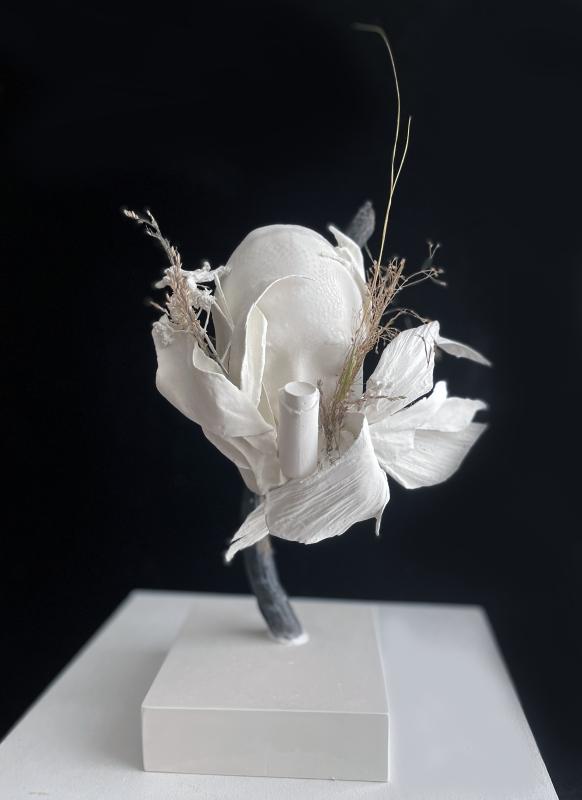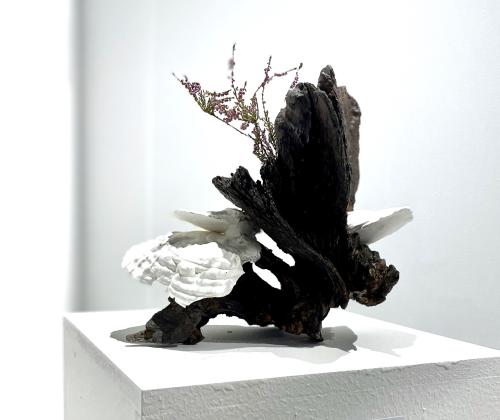Rewilding

Rewilding
Whether human or another species, we are all capable of the regeneration of damaged parts. The same applies to our beautiful planet, of which we are a product, whom I would argue, will regenerate completely perfectly without our intervention. Yet, by looking for more symbiotic ways of living and fixing ‘regeneration’ does not simply apply to the tangible, but also to the regeneration of thought processes; many of which can help us find once more a purpose which arguably has become almost ethereal amongst the detritus of technological distraction. ‘Purpose’ in an age of Godlike technology is fundamental to our evolutionary progress.
These two sculptures in found objects from the woods and a pioneering ceramic called Noxorb, (which absorbs one of the by-products of combustion, nitrogen dioxide- the gas that exacerbates asthma’) are called ‘Rewilding’ and ‘Corpus Callosum’. The former addressing a concept of regeneration with an emphasis on restoring ecosystems to their natural state by reintroducing native species and allowing natural processes to thrive. This practical application aligns with the holistic, intuitive, and interconnected thinking associated with right hemisphere cognition. Yet, the head in ‘Rewilding’ surrounded by the wild grasses that were once domesticated to in the agricultural revolution, can only breathe with the aid of the iconic asthma puffer in her mouth. The same pollutant NOx affects not only humans but pollinating insects and even the very presence of the plants pollinators need.
(This piece recently longlisted for The Aesthetica Future Now Prize)
The latter sculpture was inspired by the structure of the brain, the two sides of the which are most differentiated by their ability to pay attention; the left with pin point focus and the right, dispersant and all encompassing. Both are connected by the Corpus Callosum(currently on show in Green Art Expo Abu Dhabi) which in the sculpture is a beautiful piece of tree root surrounded by the lobes of the brain represented by large funghi.
In terms of regeneration, the more analytical, linear, and reductionist thinking of the left hemisphere can be compared to traditional conservation efforts that often focus on managing individual species or specific aspects of ecosystems. However, true sustainability and regeneration require a balanced integration of both approaches, acknowledging the need for detailed analysis and strategic planning while also respecting and remembering the awe and complexity inherent in natural systems.
By embracing both rewilding and the synthesis of left and right hemisphere thinking as a new ‘Symbiocene’ we can foster genuine regeneration in thought as well as practise and ensure a more sustainable future for our planet.

